
PORCHES sunlit in all seasons
Countless archival renderings and photographs, particularly from the years 1870 to 1920, show even outdoor porches fully furnished in suites of wicker, rattan, or painted furniture. An outdoor porch might have served as a three-season space with the installation of seasonal glazing. Small rugs, tea tables, and oil or electric lamps provided all the comforts of a furnished room. In Boston, the Victorian Shingle Style house (above right) dates to 1889 but its front porch was long ago enclosed, perhaps as early as 1910, with period windows, creating a generous sunroom appropriately furnished with Arts & Crafts-era furniture. Those conventions of porch living can be brought into the sunroom year-round. More formal sun parlors may nod to the outdoors with just a plant or two.
the history of the sunroom, like many things aesthetic and architectural, can be traced to ancient Rome, with its atria, and to the garden rooms of Renaissance Italy. During the Victorian era, the breakfast room might face east but it was hardly a sunroom; conservatories were geared toward raising plants. It was in the early-20th century that sunporches and sun parlors became common, appearing on plans for new houses by architects and mail-order designers alike. Several factors probably contributed to the new popularity. At the time, the "cure" for tuberculosis was a stay at a sanitarium in the mountain air; it was accepted that fresh air and sunlight were good for us. The 1918 influenza epidemic added to the demand. Magazine articles touted the health benefits of a sunroom as well as a sleeping porch. Sunrooms were included in all the period's house styles, from Tudor and Spanish to Dutch Colonial. Many a sunroom was added to an older house. Some were simply a glazed porch. Others were fancier with decoratively laid tile floors, French doors, and maybe even a tiled fountain in the floor or on the wall.
هذه القصة مأخوذة من طبعة September - October 2024 من Old House Journal.
ابدأ النسخة التجريبية المجانية من Magzter GOLD لمدة 7 أيام للوصول إلى آلاف القصص المتميزة المنسقة وأكثر من 9,000 مجلة وصحيفة.
بالفعل مشترك ? تسجيل الدخول
هذه القصة مأخوذة من طبعة September - October 2024 من Old House Journal.
ابدأ النسخة التجريبية المجانية من Magzter GOLD لمدة 7 أيام للوصول إلى آلاف القصص المتميزة المنسقة وأكثر من 9,000 مجلة وصحيفة.
بالفعل مشترك? تسجيل الدخول
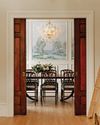
uncovering the charm
An eye-popping restoration followed when the owners removed faceless aluminum siding to find a handsome brick exterior with original details intact.
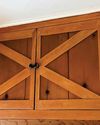
A Touchup for Knotty Pine
More than a simple cleaning, this process removes grime and a tired finish while preserving the mellow quality of vintage knotty pine.

Quick Fixes
Do it fast but do it well.

the KITCHEN UPFRONT
When this 1880s Philadelphia house was built, the kitchen was undoubtedly in a different location.
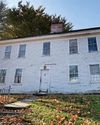
MORE THAN A HOUSE MOVING
even good smells can be too much Homeowner Jeremy Stock insisted that he and Danielle not only needed a stove vent but that they'd need a very efficient one that would vent steam, smoke, and smells to the outside.
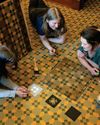
A Pattern Match
The discovery of a patch of historic linoleum led to the re-creation of an 1890s-style floor, using paint and vinyl.
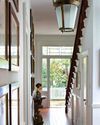
the door IN ITS FRAME
The frame is often overlooked as a key component to a properly operating entry door.

bathroom inspirations TIPS, TRICKS, HACKS FOR ROOMS OF REASONABLE SIZE & BUDGET
Even considering the usually small square footage, the bathroom in an older house is often the most challenging design conundrum during renovations.
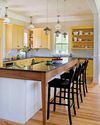
Sunshine in a Cottage Kitchen
A happy room demonstrates that simplicity often underlies good design.
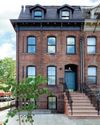
A REWARDING EXPERIENCE!
We revitalized a long-forgotten building on a prominent corner and would do it again.